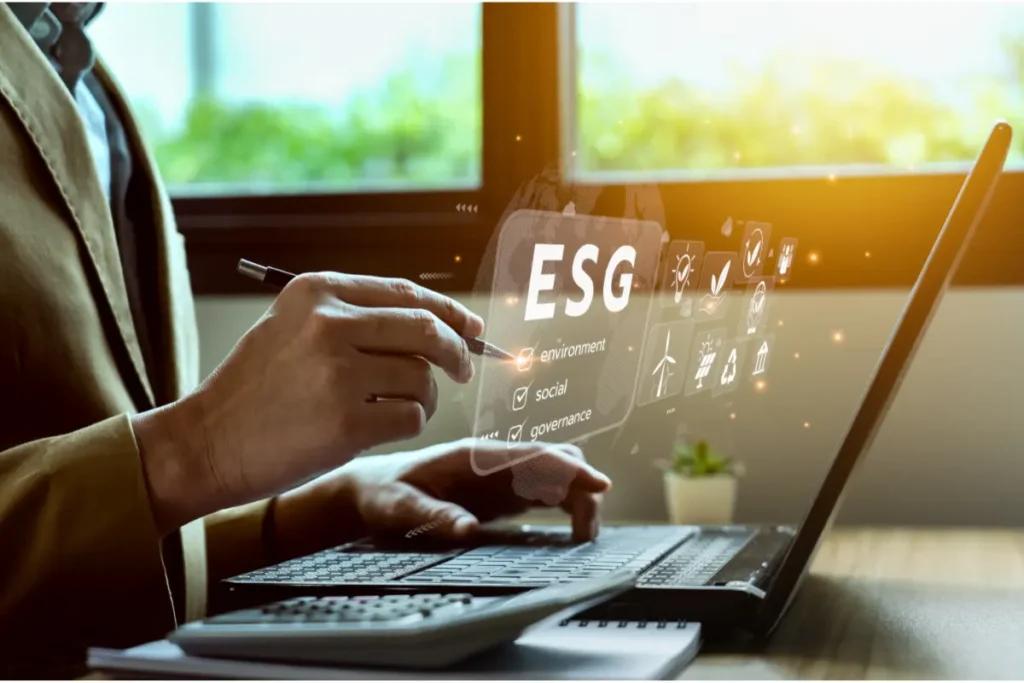Why Communicating Your Environmental Actions Is Key to Building Trust, Brand, and Compliance
Communicating your environmental actions is more important than ever. Not only does it build trust and transparency, but it also enhances your brand image and provides a competitive advantage. Additionally, it ensures compliance with regulatory and stakeholder expectations. In this article, like CSRD reporting, we will explore why you should communicate your environmental actions effectively.
Building Trust and Transparency
Effective communication about your environmental efforts builds trust and transparency with your stakeholders. Reports such as ESG (Environmental, Social, and Governance) and CSRD (Corporate Sustainability Reporting Directive) play a vital role in this process. They provide a standardized way for organizations to report their sustainability practices, ensuring that stakeholders have access to accurate and consistent information.
You demonstrate a commitment to accountability when you openly share your environmental goals, achievements, and challenges. This openness can lead to increased support and loyalty from your audience, as they see you are dedicated to positively impacting the environment.
Enhancing Brand Image and Competitive Advantage
Communicating your environmental actions effectively can significantly enhance your brand image. A strong commitment to sustainability can set your brand apart in a market where consumers are increasingly environmentally conscious. Sharing your environmental initiatives can attract and retain customers who prioritize eco-friendly products and services.
Companies perceived as sustainability leaders often enjoy higher customer trust and loyalty. This can translate into increased market share and revenue. Additionally, being recognized for your environmental actions can open up new business opportunities, such as partnerships and collaborations with other eco-conscious organizations.
Meeting Regulatory and Stakeholder Expectations
Meeting regulatory and stakeholder expectations is another critical reason for communicating your environmental actions effectively. Governments and regulatory bodies around the world are implementing stricter environmental regulations. You can avoid potential fines and legal issues by proactively communicating your compliance with these regulations.
Stakeholders expect transparency regarding your environmental practices, including investors, employees, and customers. They want to know that you are committed to sustainability and taking meaningful steps to reduce environmental impact. Providing regular updates on your progress allows you to meet these expectations and strengthen relationships with your stakeholders.
Leveraging ESG and CSRD Reporting
ESG and like CSRD reporting are powerful tools that can help you communicate your environmental actions. These reports comprehensively overview your sustainability practices, including your environmental policies, goals, and performance.
Using these reports, you can showcase your dedication to sustainability and give stakeholders the necessary information to make well-informed choices.

ESG reporting, in particular, focuses on environmental, social, and governance factors, providing a holistic view of your organization’s impact. This kind of reporting allows you to pinpoint areas that need enhancement and establish challenging sustainability objectives. By sharing your ESG report with stakeholders, you can show that you are serious about your environmental responsibilities.
CSRD reporting, on the other hand, is a European Union initiative aimed at increasing corporate transparency and accountability. This reporting framework requires companies to disclose information on their sustainability practices, including their environmental impact.
Building a Sustainable Future
Effective communication about your environmental actions is not just about meeting current expectations; it’s also about building a sustainable future. By sharing your sustainability initiatives, you can inspire others to take action and contribute to a greener world. This can create a ripple effect, where more and more organizations and individuals become committed to sustainability.
Practical Tips for Effective Communication
Use Data and Metrics: Provide concrete data and metrics to support your claims. This can include information on your carbon footprint, waste reduction, and energy efficiency.
Tell Your Story: Share the story behind your sustainability initiatives. Highlight the motivations, goals, and impact of your actions.
Engage with Your Audience: Use various communication channels, including social media, newsletters, and your website, to reach your audience. Encourage feedback and engagement from your stakeholders.
Collaborate with Others: Partner with other organizations, NGOs, and government bodies to amplify your message and create a larger impact.
Conclusion
Effectively communicating your environmental actions is essential for building trust and transparency, enhancing your brand image and competitive advantage, and meeting regulatory and stakeholder expectations.
By tools like ESG and CSRD reporting, you can provide stakeholders with the necessary information and demonstrate your commitment to sustainability. Effective communication can help you build a sustainable future and inspire others to join you on this important journey.
You can ensure that your environmental actions are communicated effectively and that your organization is recognized as a leader in sustainability. Embrace transparency, share your story, and engage with your audience to positively impact the environment and build a brighter, greener future for all.
FURTHER READING







